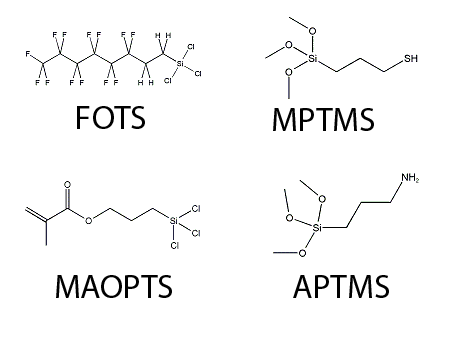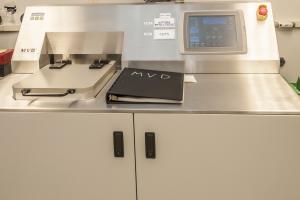RSRCH - CNF - MVD100 Training in Workday Learning
The large surface-area-to-volume ratios of surface and bulk micromachined micro and nanomechanical structures can cause unintentional adhesion of device components, referred to as stiction. Stiction occurs when restoring forces are unable to overcome interfacial forces such as capillary, van der Waals and electrostatic attractions. This results in permanent adhesion of device components to undesired surfaces. ConsequentlyNov 19, anti-stiction coatings for micro and nanoelectromechanical systems (MEMS and NEMS, respectively) and information technology devices (e.g. hard disk storage media) have found wide spread use.
To enhance the MEMS and NEMS fabrication capabilities of the CNF we have acquired an MVD-100 molecular vapor deposition system from Applied MicroStructures. This tool is capable of depositing conformal monolayer coatings on a wide variety of substrates using a vapor phase process from liquid precursors. This technique has several advantages over similar liquid-based application processes. It provides a high degree of control of the coating environment by integrating the surface preparation and monolayer deposition reaction into a single tool. This facilitates more uniform conformal coatings on micron and nanoscale patterns. Furthermore, the process does not utilize any solvents, a common source of contamination in liquid deposition processes. Atomic force microscope images of surfaces coated with monolayers using the vapor phase technique show a surface roughness an order of magnitude lower than monolayers produced using liquid techniques.
- FOTS also known as (1H,1H,2H,2H-Perfluorooctyl)Trichlorosilane. This is an excellent antistiction coating for MEMS and can be used as a release layer for imprinting and embossing.
- PEG also known as 2-[methoxy(polyethylenoxy)propyl]trichlorosilane. This monolayer creates a hydrophilic biocompatible coating.
- APTMS also known as (3-aminopropyl)trimethoxysilane. This is a useful monolayer for creating surface functionalization.
- MAOPTS also known as 3-Methacryloxypropyltrichlorosilane. This is a useful monolayer for creating surface functionalization or as an adhesion layer for certain types of polymers.
- MPTMS also known as 3-Mercaptopropyltrimethoxysilane. This is a mercapto terminated silane useful in thiol based chemistries or as an adhesion layer for very smooth gold depositions.
In the current tool configuration, only two precursors are available at the tool. Changing a precursor requires several hours work and therefore is only available by several days advanced notice. The currently loaded precursors and change schedule is as listed below:
As of Feb 10th, 2015; sources are:
- Line 2 = FOTS
- Line 3 = MPTMS
Upcoming source changes:
- user requested....


